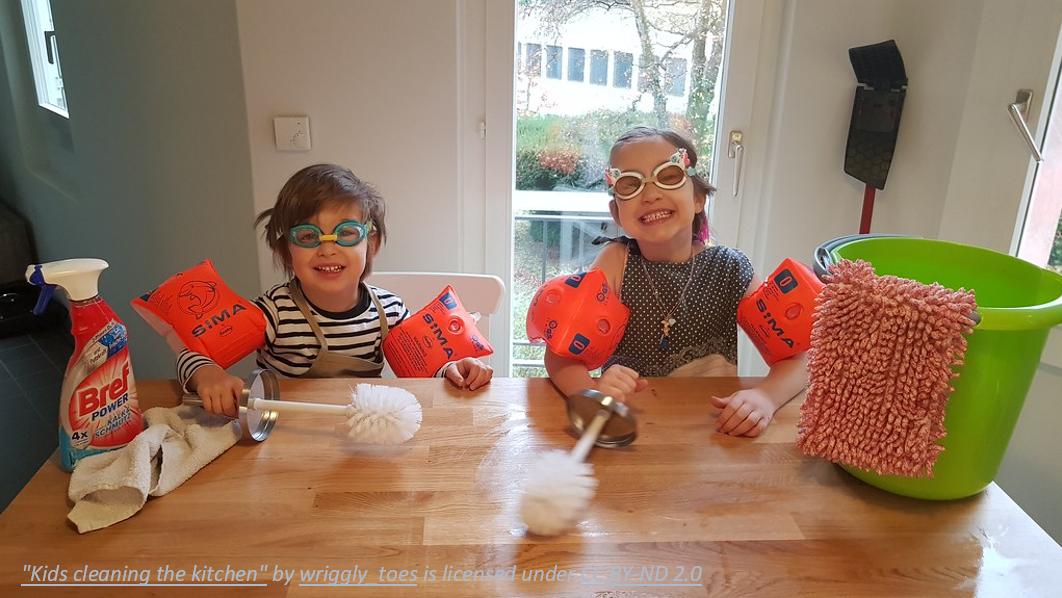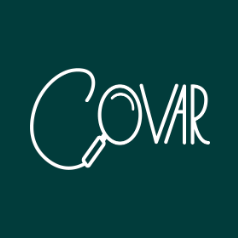The COVID-19 pandemic has led to greater use of disinfectants and cleaning products. However, it seems that many people do not understand the efficacy of certain products and chemicals, how much to use, and the dangers associated with various toxic chemicals inside “cleaning products”. These convenient and easily available products may contain toxic substances for humans, animals and the environment. Moreover, greater use of disposable masks and gloves may lead to an increase in waste going to the landfills. Therefore, during this pandemic and beyond, it is important to be conscious about the cleaning products and personal protective equipment (PPE) we use, and how we dispose of them, for best long-term individual, environmental, and public health.
Our consumer products, including cleaning products, sometimes contain chemicals that are toxic to humans and animals, and can accumulate in the environment [1]. Although this was already a crisis in the making, we have a more immediate issue to address with this pandemic. For example, the Lysol disinfectant spray approved by the EPA to kill coronavirus also contains Ammonium hydroxide, a known environmental hazard [2] [3]. A form of the chemical benzalkonium chloride (also known as Alkyl dimethyl benzyl ammonium chloride) is found in various cleaning products, including Clorox Disinfecting Wipes and industrial products such as BNC-15 [4] [5]. This chemical has been considered by the CDC and WHO to be “very toxic to aquatic organisms. It is strongly advised that this substance does not enter the environment” [6]. Given the range of toxic effects observed on plants and animals, the use of it has been strongly discouraged.[1] [7]
So, how do you balance the need to keep yourself and your family safe from coronavirus with the desire to think long-term about your health and the environment? The EPA has prepared “List N: Disinfectants for Use Against SARS-CoV-2 (COVID-19)”. However, these products have not been individually tested for efficacy; they are generally assumed to work since they kill similar or harder-to-kill viruses [8]. Moreover, these are not all products that meet EPA’s “Safer Choice” as well as “Design for the Environment” (DfE) labels. These designations are not perfect, and even eco-friendly websites [9] have suggested the use of products such as Lysol Hydrogen Peroxide cleaners—although these also contain suspicious chemical formulations [10]. Aerosol products are particularly problematic since they are suspended in air and may be directly inhaled by people.
Ultimately, chemical solutions that kill coronavirus and are recognized as better for the environment include:
isopropyl alcohol (>=70%) and hydrogen peroxide (3%) [11] [13].
“Solutions of 70% alcohol should be left on surfaces for 30 seconds … to ensure they will kill viruses”, Rutgers professors indicate. These generic products are also often cheaper than their branded counterparts. The chemicals:
L-lactic acid, Citric acid, and Thymol,
present in products such as Seventh Generation Multisurface Cleaners (0.05% thymol), have also been regarded as safer and effective in killing coronavirus [13]. Simply: soap and water have been recognized as killing the coronavirus and effective cleaning surfaces [14]. No need to go crazy. Many organizations and web sites have been providing information on hazardous substances in our consumer products, such as Workgroup for Safe Markets and EcoWatch. Coming Clean recently published an informative blog on safer disinfecting at home in the times of Coronavirus [9]
Although sometimes a product may seem safe because its active ingredient is generally safe, many toxic chemicals are present under the label of “fragrance”. A recent report by Breast Cancer Partners suggests that “Fragrance chemicals make up the vast majority of chemicals linked to adverse chronic health effects in the beauty, personal care, and cleaning products” they tested [15]. Although these studies are not conclusive they suggest a problematic role for so-called "fragrances". In this BCPP report various chemicals in these household and beauty products were considered as carcinogens, hormone disruptors, respiratory toxicants and developmental toxicants.
Further information about cleaning products and cleaning for the coronavirus may be found in this bog at Coming Clean [11] or this list or safer products prepared by Beyond Pesticide [16]. As a note, products identified here are done so based only on their market availability and their inclusion of certain chemicals. The information of this article is intended to help people understand the chemicals they interact with, and their impacts to themselves or their environment.
***
Acknowledgments: Thanks to Elena Past for providing a review of this article prior to publication.
Disclaimer: I am not involved with, nor have I any financial stake in, the products mentioned here.
REFERENCES
[1] Gerster, F. et al. (2014). Hazardous substances in frequently used professional cleaning products. International Journal of Occupational and Environmental Health, 20(1), 46–60.
[2] Crespo, G. and Lee., A. (July 7, 2020). EPA approves two Lysol products as the first to effectively kill novel coronavirus on surfaces. CNN. https://www.cnn.com/2020/07/07/health/epa-lysol-disinfectant-covid-19-trnd/index.html
[3] National Center for Biotechnology Information (2020). PubChem Database. Ammonium hydroxide, CID=14923, https://pubchem.ncbi.nlm.nih.gov/compound/Ammonium-hydroxide (accessed on July 16, 2020).
[4] Clorox Disinfecting Wipes – Ingredients and Contents (2020). https://smartlabel.labelinsight.com/product/6075824/ingredients
[5] BNC-15 Spartan Chemical (2019). https://www.spartanchemical.com/products/loadpdf/?resourceFilename=1056
[6] CDC (2015). Benzalkonium Chloride. Centers for Disease Control and Prevention – The National Institute for Occupational Safety and Health (NIOSH). https://web.archive.org/web/20171116074822/https://www.cdc.gov/niosh/ipcsneng/neng1584.html
[7] Sreevidya, V., Lenz, K., Svoboda, K. And Ma, H. (2018). Benzalkonium chloride, benzethonium chloride, and chloroxylenol - Three replacement antimicrobials are more toxic than triclosan and triclocarban in two model organisms, Environmental Pollution, 235, 814-824. https://doi.org/10.1016/j.envpol.2017.12.108 ; Ferk et al (2007). Benzalkonium chloride (BAC) and dimethyldioctadecyl-ammonium bromide (DDAB), two common quaternary ammonium compounds, cause genotoxic effects in mammalian and plant cells at environmentally relevant concentrations, Mutagenesis, 22(6), 363–370. https://doi.org/10.1093/mutage/gem027. Further information on this chemical’s toxicity: https://www.cdc.gov/niosh-rtecs/bo3010b0.html
[8] Scranton, A. (2020). Blog: Safer Disinfecting at home in the times of Coronavirus. Coming Clean. https://comingcleaninc.org/latest-news/in-the-news/safer-disinfecting
[9] https://www.ewg.org/news-and-analysis/2020/03/16-effective-and-safe-products-guard-against-coronavirus
[10] http://rbnainfo.com/product.php?productLineId=1911
[11] Wolf, D. (April 17, 2020). Use of hydrogen peroxide for coronavirus disinfection. Municipal Technical Services – Institute for Public Service, University of Tennessee.
[12] Buccino, N. (March 13, 2020). The best ways to kill coronavirus in your home. Rutgers Today. https://www.rutgers.edu/news/best-ways-kill-coronavirus-your-home
[13] https://www.epa.gov/pesticide-labels/design-environment-logo-antimicrobial-pesticide-products ; https://www.epa.gov/pesticide-registration/list-n-disinfectants-use-against-sars-cov-2-covid-19
[14] https://www.zdnet.com/article/coronavirus-test-shows-soap-and-water-is-an-effective-way-to-clean-your-devices/
[15] BCPP (2018). Right to know: exposing toxic fragrance chemicals report. Breast Cancer Prevention Partners. https://www.bcpp.org/resource/right-to-know-exposing-toxic-fragrance-chemicals-report/
[16] https://beyondpesticides.org/assets/media/documents/Protecting%20Yourself%20from%20COVID-19%20(coronavirus)%207.7.20.pdf

